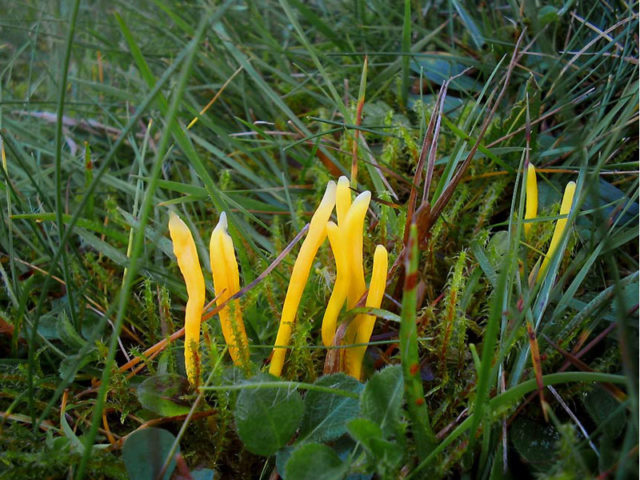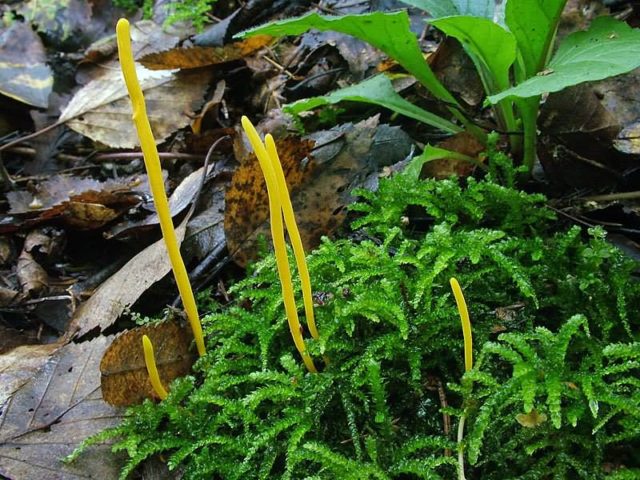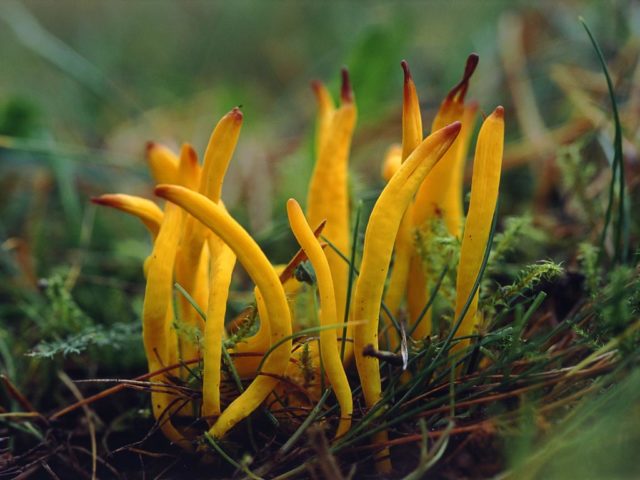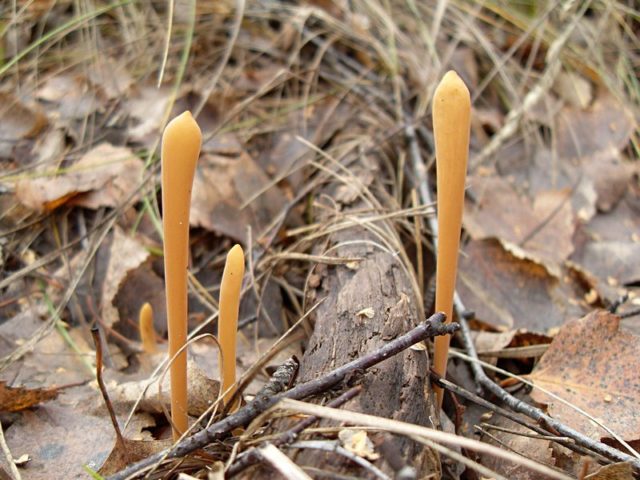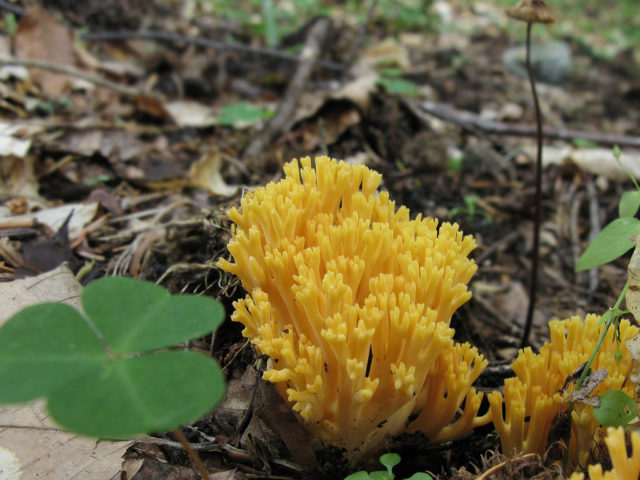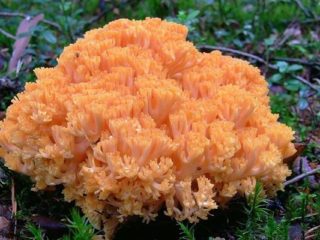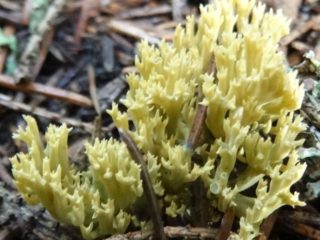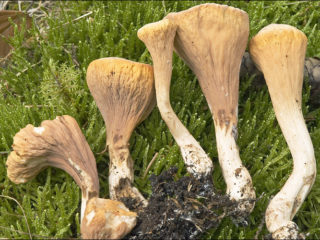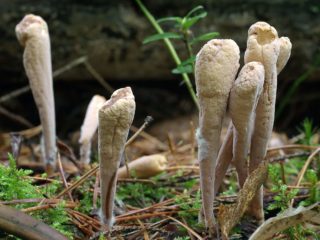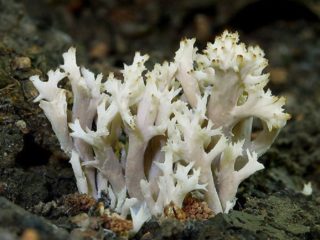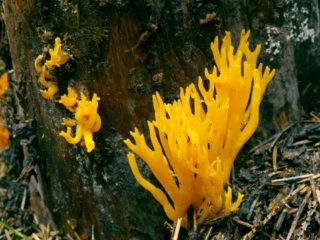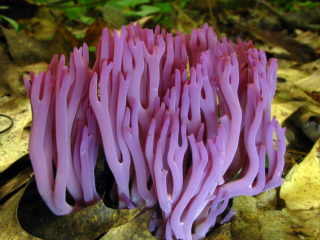Content
Fawn Clavulinopsis (Clavulinopsis Helvola), also called Fawn Rogatik, belongs to the large Clavariaceae family. The genus has more than 120 species. For their original appearance, they were popularly called deer horns, hedgehogs and corals. The colony of these mushrooms really resembles marine organisms that have settled in the forest.
Where do fawn clavulinopsis grow?
Distributed throughout the Northern Hemisphere. In Russia, they are most often found in the Far East and western regions of the country. They usually grow in large colonies or singly on fertile soils, in moss, in half-rotten remains of trunks and branches, and in forest waste.Favorite habitat is deciduous and mixed forests with plenty of sun. Appears in August and bears fruit until mid-late September.
What do fawn hornets look like?
The fruit body is small, very elongated, without a pronounced cap. It is yellow-sand in color, uniform over the entire surface, becoming slightly lighter towards the base. Sometimes it can take on a bright carrot tint. When the mushroom appears, the tip is sharp, becomes rounded as it grows, smoothly turns into a thin short stalk, no more than 0.8-1.2 cm. The entire surface is a spore-bearing layer. It is matte, slightly rough, with faint longitudinal grooves.
It grows from 2.5 to 5.5 cm, some specimens reach 10 cm, and the thickness ranges from 1 to 5 mm. The pulp is fragile, yellowish-beige in color, has a spongy structure, without a distinct odor.
Is it possible to eat fawn clavulinopsis
Clavulinopsis fawn, like other representatives of its species, does not contain substances toxic to humans. However, the bitter taste and unpleasant, pungent juice did not allow this variety of horned mushrooms to be classified as edible mushrooms. Do not eat, the species is inedible.
How to distinguish fawn horntails
This type of mushroom has no poisonous counterparts. They are similar to some yellow and beige varieties of their own family.
- Horntail fusiform. Inedible due to peppery taste. It has a poisonous yellow color, pointed brownish tips.
- Rogatik fistula. It is classified as a conditionally edible mushroom due to its caustic juice. It differs from the fawn variety in its larger size - up to 16 cm, and club-shaped.
- Rogatik yellow. Edible, belongs to category IV. It reaches a height of 20 cm and is distinguished by its bush-like shape, when branched shoots-horns grow from one fleshy leg.
Conclusion
Clavulinopsis fawn is an unusual member of the fungal kingdom. He can be mistaken for a native of the sea world - his appearance is so unique. It grows everywhere in Eurasia and North America. Being a saprophyte, it brings tangible benefits to the forest and ensures soil fertility. It is not poisonous, but should not be eaten. The taste and culinary value of the fruiting body is extremely low.
